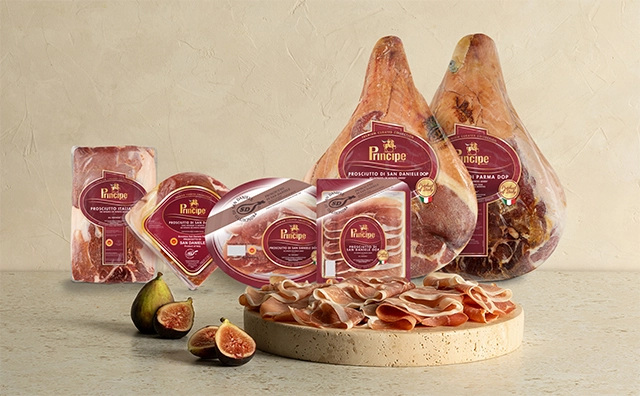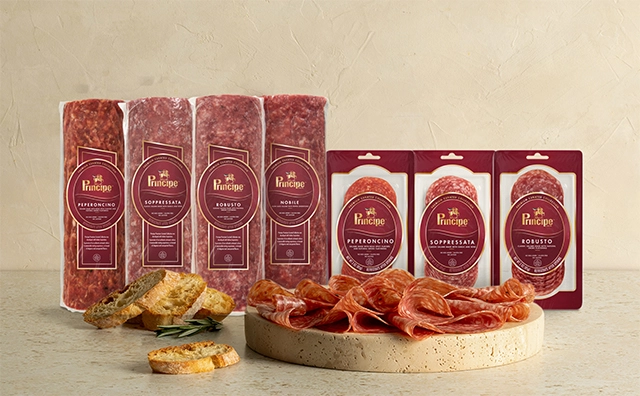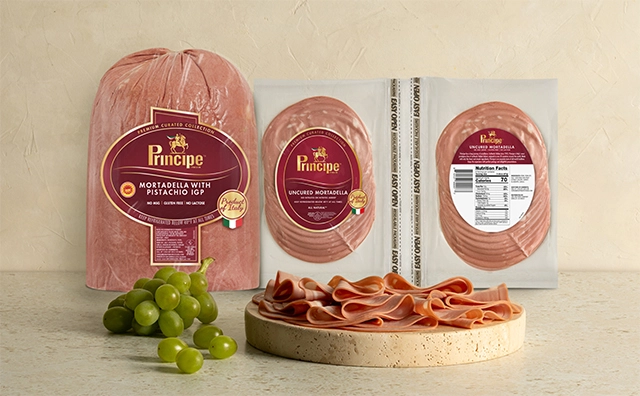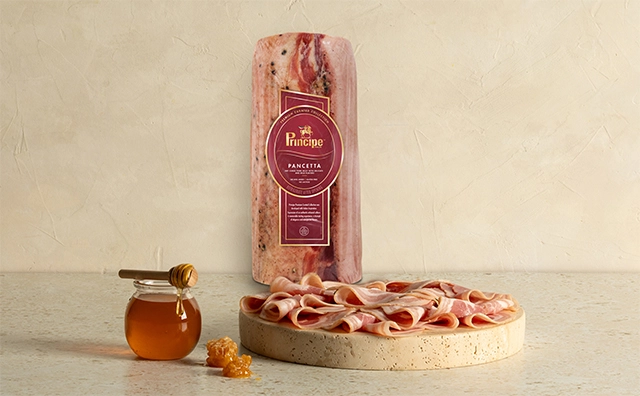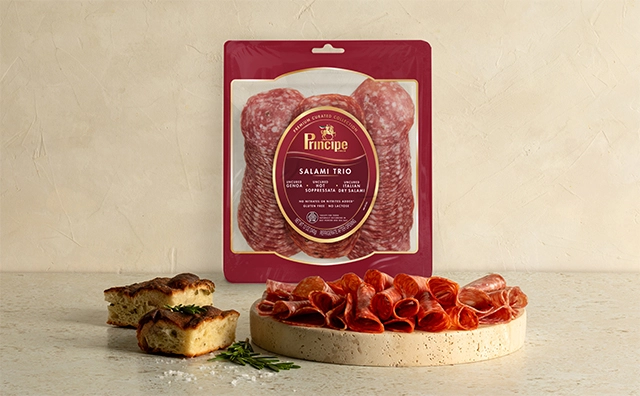CUSTOMER FAQs
About our Products
“Salumi” is the Italian translation of the French word, “Charcuterie”.
Some popular salumi include Prosciutto, Salami, Mortadella and Pancetta.
Prosciutto is a dry-cured pork leg that is typically thinly sliced and enjoyed as an appetizer or in sandwiches. Two well-known types are Prosciutto di Parma and Prosciutto di San Daniele.
Salame is a type of cured sausage made from fermented and air-dried meat. There are many regional variations of salame in Italy, with different flavors and textures.
Salame is singular, Salami is plural. So, when we talk about the product in general we should use “Salame”. When we refer to more than one flavor we should say “Salami”.
Mortadella is an Italian cold cut made of finely ground pork and flavored with spices, while bologna is a similar sausage, but with a smoother texture and often has additives like fillers and preservatives.
The main differences in various types of salame lie in the ingredients used, production methods, regional variations, and flavor profiles.
Soppressata is an Italian salame that’s known for its garlic and wine flavors, though it can come in sweet and hot varieties.
Dishes & Occasions
Salumi are commonly used in antipasti platters, sandwiches, pasta dishes like Carbonara, and pizza toppings. They can also be used to enhance the flavor of various recipes.
Salumi are commonly used in dishes like Antipasto platters, Caprese salad, Pasta Carbonara, Pizza, Panini sandwiches, and various pasta and risotto recipes.
Salumi are versatile and can be enjoyed on a variety of occasions, including family dinners, picnics, parties, holidays, and as a quick snack.
Yes, some salumi are associated with particular occasions. Prosciutto is commonly served during special events and celebrations. You’ll find salumi featured prominently in many holiday feasts, such as Easter, Christmas, and New Year’s celebrations
Salumi often pair well with red wines like Chianti, Barolo, and Barbera. White wines like Pinot Grigio can also complement Italian meat dishes.
Yes, salumi can be a delicious addition to salads. For example, Prosciutto-wrapped melon, or Salami and Mozzarella salad are popular choices.
Salumi such as Salame, Prosciutto and Mortadella are commonly used on pizza, adding a burst of flavor and texture.
Absolutely! Salumi can be enjoyed in everyday dishes like sandwiches, pasta, and salads, making them a versatile and flavorful addition to your regular meals.
About our Process
Salumi are typically best stored in the refrigerator. Keep them wrapped in plastic or parchment paper and stored in an airtight container to prevent them from drying out. Salumi are best enjoyed at room temperature, wait 5-10 min after being sliced before serving
The process of making salame typically involves mixing ground meat with salt, curing agents (like sodium nitrate or nitrite), and various seasonings. The mixture is then stuffed into casings and left to ferment and air-dry for a specific period.
Fermentation involves allowing beneficial bacteria to develop, which contributes to the sausage’s flavor and preservation. It usually takes several weeks or months, depending on the type of salami.
Yes, there are countless varieties of salame often associated with specific regions in Italy and other countries. Varieties can differ in taste, texture, and spices used.
Freezing salame is possible, but it can affect the texture and flavor. If you need to freeze it, wrap it well in plastic wrap and place it in an airtight container or freezer bag.
Unopened salame can last for several months, or even longer if stored properly. Once opened, it should be consumed within a few days.
Yes, salame is typically eaten raw. It’s a popular choice for antipasti platters, sandwiches, and as a pizza topping. Cooking is not required, but it can be added to cooked dishes for flavor.
About the Ingredients
Salumi like Prosciutto and Salami are primarily made from meat, typically pork but sometimes beef, along with various seasonings, salt, and curing agents.
Salumi are seasoned with a variety of spices and herbs, which can include black pepper, white pepper, fennel seeds, garlic, red pepper flakes, and other herbs and spices.
Yes, nitrates and nitrites are commonly used in salumi as curing agents to preserve the meat and provide a distinct flavor and color. They help prevent the growth of harmful bacteria.
Yes, there are countless varieties of salame often associated with specific regions in Italy and other countries. Varieties can differ in taste, texture, and spices used.
Salt is a crucial ingredient in salumi. It not only adds flavor but also helps to draw out moisture from the meat, aiding in preservation and the development of a firm texture.
Our salumi do not contain additives or fillers.
Our salumi do not allergens like gluten or dairy.

